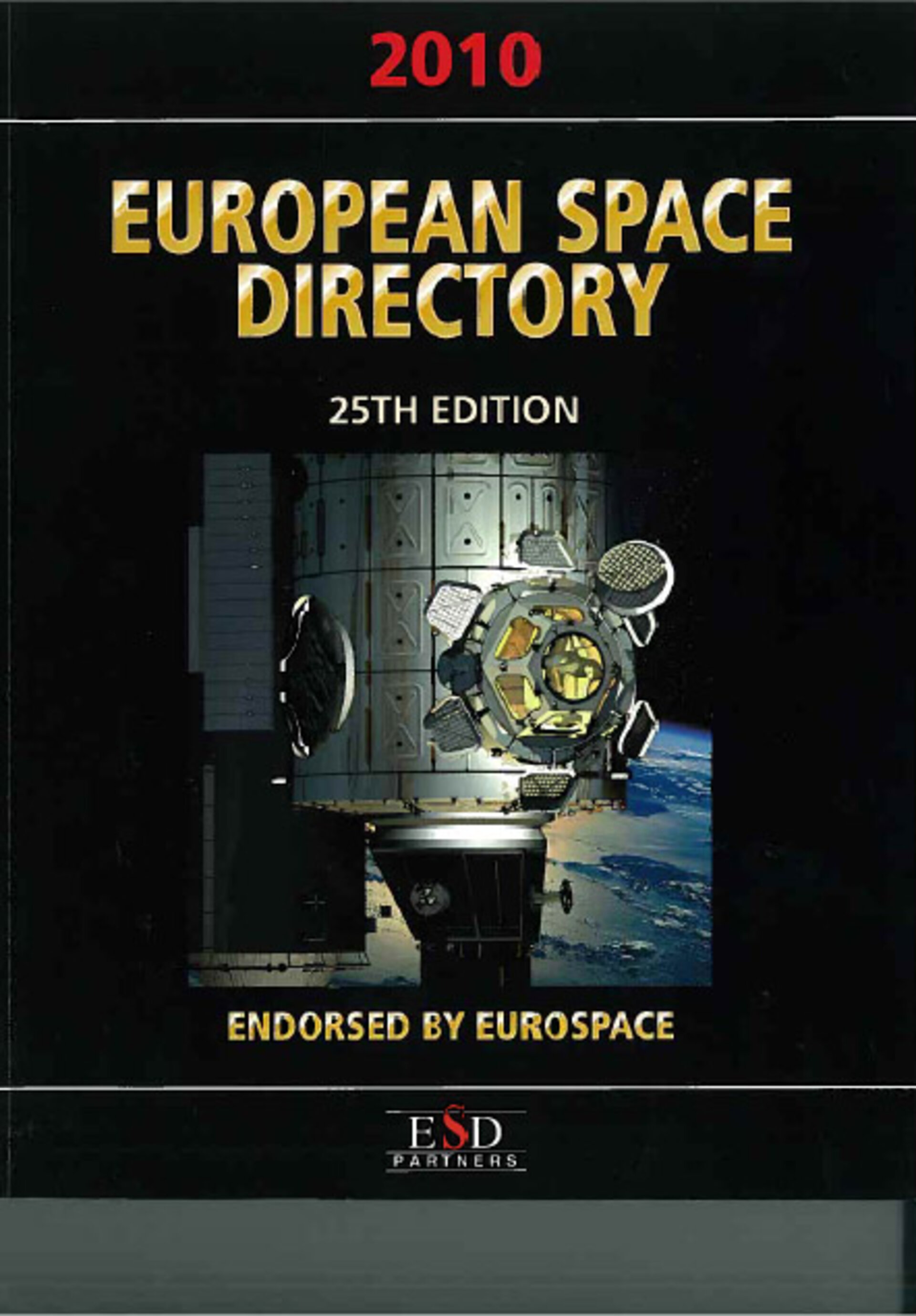Director General in European Space Directory 2010
Jean-Jacques Dordain, ESA Director General, discusses achievements and outlines the Agency's activities in the foreword of the 25th edition of the European Space Directory published in September 2010.
European Space Directory 2010, 25th Edition
Foreword
by Jean-Jacques Dordain, ESA Director General
As we look to what is clearly a busy year ahead of us, it is equally clear how rewarding the year just gone has been. In 2009, no fewer than five ESA satellites were launched. Last Christmas we celebrated the 30th anniversary of the first Ariane launch from Kourou. And what an appropriate time to celebrate this, with no fewer than seven Ariane 5 launches carried out during the year. We can say with pride that Ariane 5 continues to affirm its role as the world’s most reliable workhorse.
With the first two Earth Explorers, GOCE and SMOS, now in orbit, Europe has confirmed its leading position in Earth observation for the study of the environment, including climate change aspects. With the Herschel and Planck telescopes, Europe has likewise confirmed its position at the forefront of space-based astronomy. And with the technology demonstrator, Proba-2, ESA has shown that it is actively preparing for the future.
These are good signs for the new decade – a decade in which space is expected to bring more and more services and scientific knowledge to citizens. In addition, the role of the European space sector becomes even more important in today’s fragile economic climate. Long-term space programmes and space-related services can be a stabilising factor during such times.
ESA is making an unprecedented effort to provide data for environmental and climate change research, as seen with the Earth Explorer series. Next to be launched, early in the year, is CryoSat-2, the third Earth Explorer. The average launch rate of these satellites, of one per year, is currently unmatched anywhere else in the world. In addition, the space segment for GMES is under development, and ESA is moving ahead with its Climate Change Initiative (focused on data storage and the production of Essential Climate Variables).
Indeed, it is essential to secure the synergies available between science, technology and applications. These are virtually indissociable, and it is quite clear that the development of services for citizens comes out of scientific advances. This is demonstrated most clearly in Earth observation, where an obvious borderline cannot be drawn between scientific missions and the introduction of operational applications.
For Galileo, 2010 has already brought good news. In January, the first three contracts for the Galileo Full Operational Capability work packages were signed on behalf of the European Commission at ESA/ESTEC in the Netherlands. The remaining three should be awarded by the end of the year.
This will also be an important year for human spaceflight. The European-made Node 3 and Cupola were launched to the International Space Station in February. Two ESA astronauts, Roberto Vittori and Paolo Nespoli, are expected to fly to the Space Station later in the year. A decision by the ISS partners on extending the utilisation of the Station to 2020 is to be taken.
At political level, in Europe, the Treaty of Lisbon reinforces significantly Europe as a space power by providing competence in space to the EU. The second high-level International Conference on Space Exploration will be held in Brussels in October. This is another step in the process aimed at defining a European vision and strategic planning for space exploration. A seventh ESA/EU Space Council is planned for November.
Also to be borne in mind, 2010 will be a turning point for the concept definition of the next-generation European launcher. A future-oriented view is a must if we want the new decade to be as successful as the last one. We also look forward to the first launch of the middle-class Soyuz launcher from Europe’s space port in French Guiana by the end of the year.
Let me mention another point of evident importance for the coming years: the Agency’s reform of its financial system (the FINREF project). The new system is being introduced this year after a lot of work that we are convinced will pay off in the years ahead of us – not only to give further transparency to Member States but also to work with other partners. This reform is part of a wider drive to ensure a fully up-to-date ESA for the 21st century - just where an active European Space Agency belongs.
Finally, as we move into this new decade, it is becoming increasingly clear that ESA is attracting and working with more and more partners. The Agency has close partnerships with national space agencies (such as DLR for the Columbus laboratory operations, and CNES for the Automated Transfer Vehicle operations). The Agency is working closely with Eumetsat, the European Commission, as well as the European Defence Agency, through the present 'structured dialogue', and, not least, with industry in public-private partnerships, such as Hylas with Avanti, Alphasat with Inmarsat and the Small GEO Satellite with Hispasat. These are real PPPs, where the operators are sharing the risk with ESA. Also in 2010, the European Data Relay Satellite system will be consolidated in partnership with a private operator. ESA is also working more and more with more and more international partners, either on a bilateral basis (such as on Soyuz at CSG with Russia) or on a multilateral basis (such as on the International Space Station).




